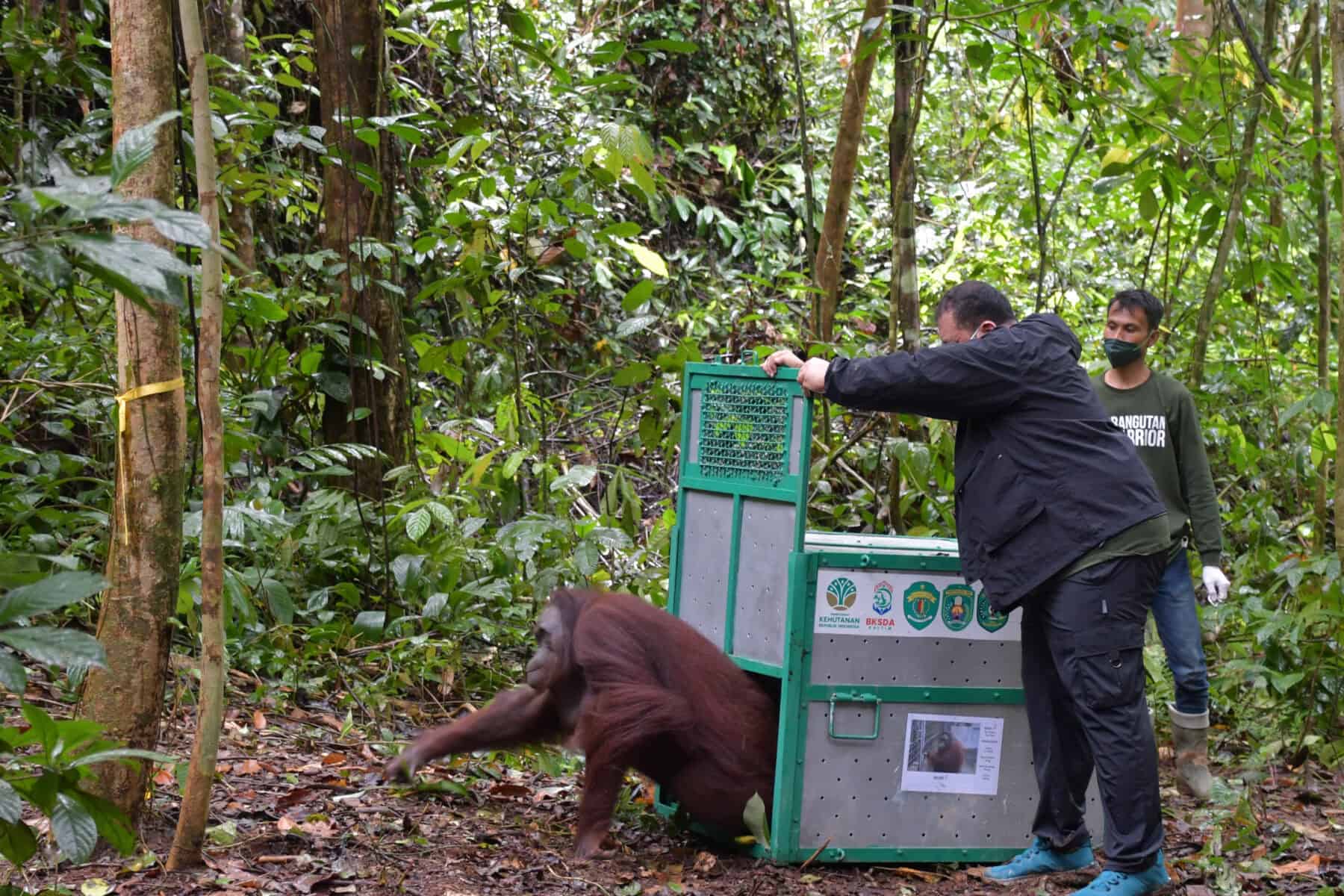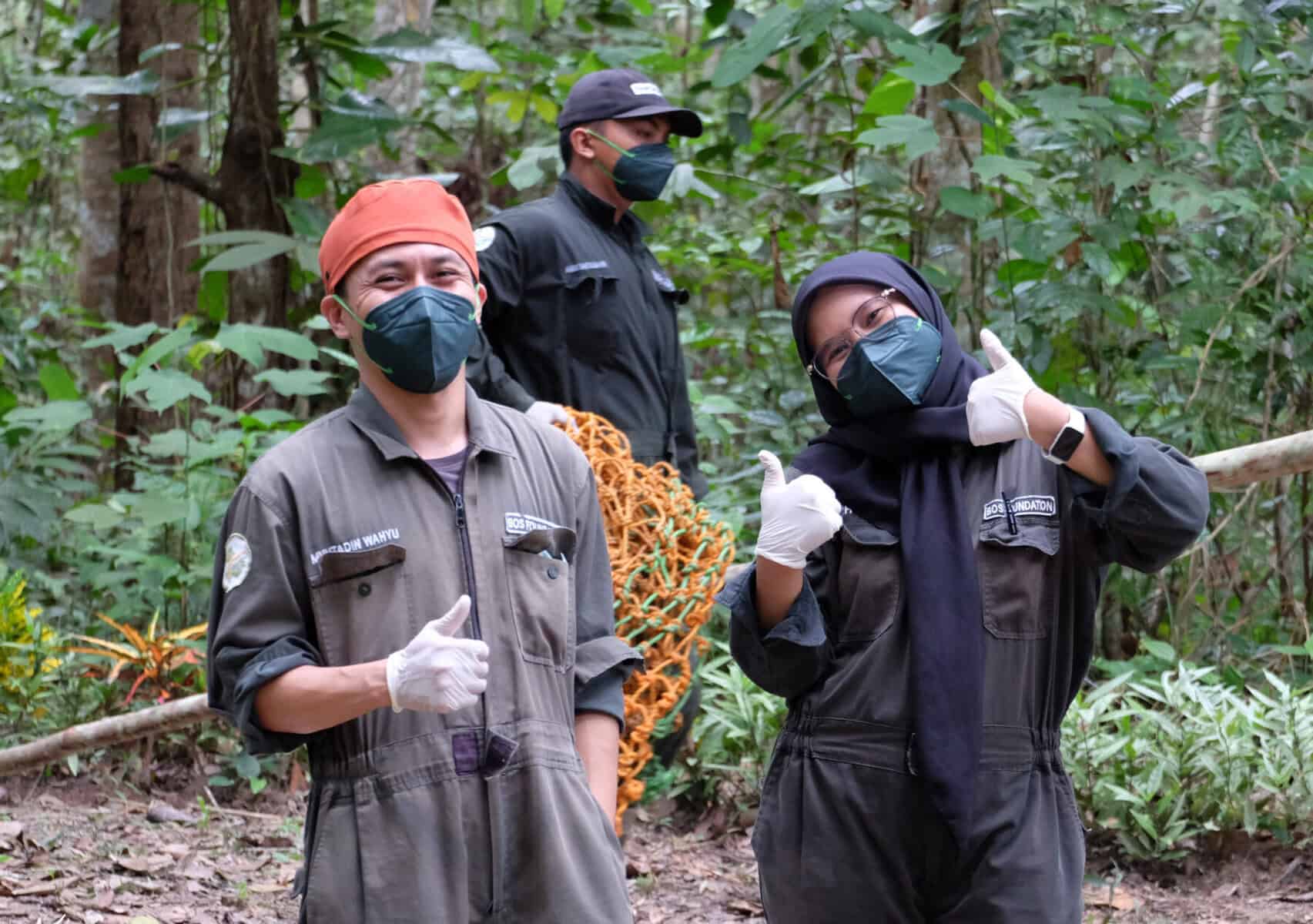Every orangutan has a unique story, and the recent releases in East Kalimantan provided excellent examples of how diverse and complex those stories can be.
Among the orangutans reintroduced to the wild were Mori, Siti, and Uli. Each had previously been released, but thanks to ongoing monitoring by the Borneo Orangutan Survival Foundation (BOSF) and crucial reports from local communities, it became clear they needed a second chance at rehabilitation and re-release. Their journeys remind us that the road to true freedom often requires time and dedicated care.
Disease brought Mori back to rehabilitation
Mori began her rehabilitation at Samboja Lestari in 2012 and was in BOSF’s care for seven years before being released into the Kehje Sewen Forest, East Kalimantan, in 2019. However, she encountered health complications due to melioidosis and was brought back to the health care center, where she was once again prepared for release. She is now fully recovered and back in the wild.

An old lady returns to the wild
Siti, the oldest orangutan in the recent release, has a different story. She was initially released back in 1997 as part of the original BOS Foundation East Kalimantan rehabilitation and reintroduction project. On 6 December 2022, the Balikpapan Conservation and Natural Resources Authority (BKSDA) received a report stating that Siti had interacted with staff at a work site for four days, made nests around their campsite, and begged for food.
A joint team from the Balikpapan BKSDA and the BOS Foundation sedated her at the campsite, scanned her microchip to confirm, surprisingly, that it was their old friend Siti, and brought her back for rehabilitation. Due to her prolonged exposure to humans, she had to undergo a three-month quarantine period followed by further training and re-rehabilitation before finally being released again, almost 2,5 years later.

Uli got a bit too comfortable among humans
Uli was originally released into the Gunung Beratus Protection Forest in 1999. However, in June 2022, videos began circulating of him being fed by villagers. A team was dispatched to investigate and discovered that the orangutan carried a microchip, indicating he had undergone prior rehabilitation. A scan confirmed it was Uli, who was then brought back to the centre for renewed rehabilitation. After two years, taken as a precaution to ensure he would no longer rely on humans for food, Uli is once again ready to embrace life in the wild.
Freedom takes time
It is impressive to see how the microchips carried by orangutans can still provide vital information, even after many years. Also, with the BOS teams’ attentiveness and swift response to reports and videos shared on social media, timely rescues and effective rehabilitation efforts are ensured. Most of all, the stories of Siti, Uli, and Mori underscore BOS’s profound commitment to genuine, individualised care and to securing lasting outcomes for each orangutan. Like humans, we are all unique, and most of us deserve a second chance once in a while!
